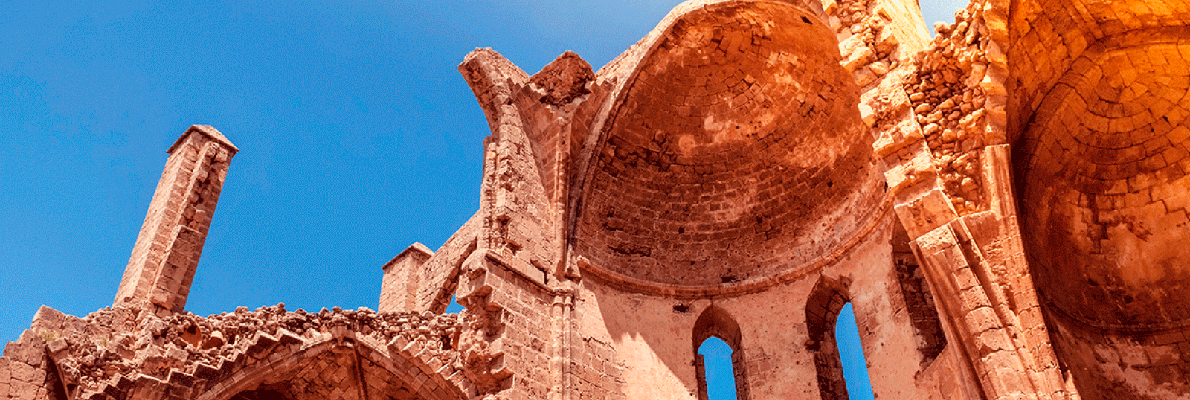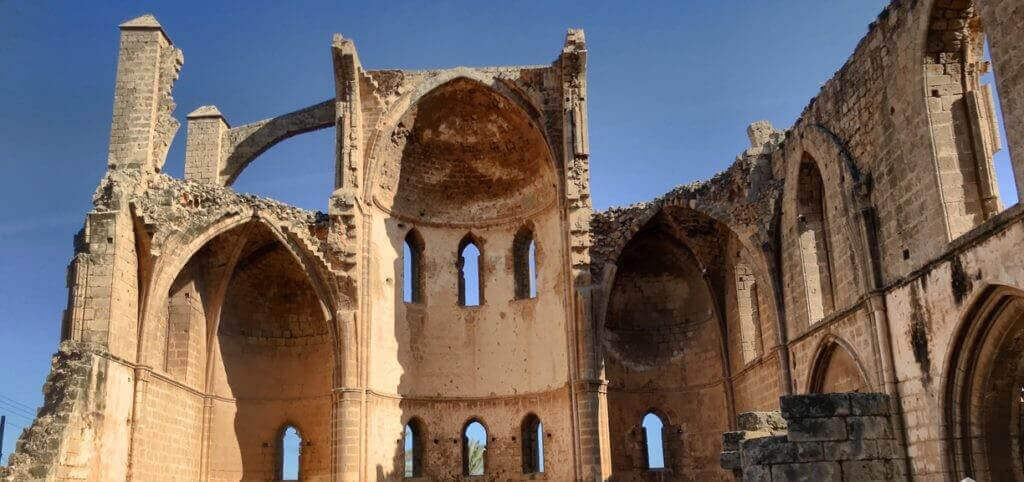Walking around Famagusta, it is difficult not to meet on your way some attraction. Those interested in architecture and religion should visit the dilapidated Church of St. George the Greek in the south-eastern part of the city.
History of St. George's Church
Cyprus was among the first states to adopt Christianity. The dominant number of inhabitants of the island were Orthodox. However, with the Lusignans ' rise to power, the influence of the Orthodox Church was weakened. In Famagusta, the Greek Orthodox population was concentrated in the southeastern part of the city, but for them there was only one small church of St. Simeon.
For Catholics, the Church of St. George of the Latins and the Cathedral of St. Nicholas were built. In the desire to have an equally majestic church, the Orthodox built the Church of St. George, which became the second largest in the city.
Throughout its history, the church has been used not only for its intended purpose and has survived more than one attack. In 1570-71, the Ottoman Empire laid siege to Cyprus. The Church of St. George was badly damaged by a cannon attack. By the way, some shells are still in its walls. In the 18th century, the city of Famagusta was almost completely deserted, and its buildings began to fall into disrepair. Sailors from the nearest port looked into the city and left behind "reminders" on the walls in the form of drawings of ships. They can still be seen today in the Church of St. George.
Currently, the temple is badly damaged, but some of its fragments, which can be judged by its former greatness, have been preserved. You can get to the territory of the attraction Completely free of charge at any time of the day.
Architecture. Gothic style
The church is built in the Gothic style, has a wide central nave and two aisles. Powerful columns raise the vault of the nave. Initially, these columns were much thinner, but did not fully cope with the support of the massive roof. The walls were cracked, so it was decided to "increase the collars" on the columns to prevent the collapse of the roof. However, this did not last long. The roof collapsed anyway.
Today tourists can see the apse, which was once filled with frescoes. It is believed that earlier on it was depicted and Christ. Today, the image of the crucifixion remains prominent, as well as several other frescoes.
The church is built in the Gothic style, has a wide central nave and two aisles. Powerful columns raise the vault of the nave. Initially, these columns were much thinner, but did not fully cope with the support of the massive roof. The walls were cracked, so it was decided to "increase the collars" on the columns to prevent the collapse of the roof. However, this did not last long. The roof collapsed anyway.
Today, tourists can see the apse, which was once filled with frescoes. It is believed that earlier on it was depicted and Christ. today, the image of the crucifixion remains prominent, as well as several other frescoes.
Modern scholars believe that the Greek Cathedral of St. George could have been built by the same architects and workers who built the Catholic St. Nicholas Cathedral. But unlike the cathedral, the dome of St. George's Orthodox Church did not stand on an octagonal drum.
Walking inside the ruined church, you can see bullet marks and drawings of sailors on the walls. Also along the walls are arched niches. At one time, they served as the graves of the patrons of the church. Sarcophagi were placed at ground level, and images of the deceased were carved on stone slabs, supplemented with text.
Modern scholars believe that the Greek Cathedral of St. George could have been built by the same architects and workers who built the Catholic St. Nicholas Cathedral. But unlike the cathedral, the dome of St. George's Orthodox Church did not stand on an octagonal drum.
Walking inside the ruined church, you can see bullet marks and drawings of sailors on the walls. Also along the walls are arched niches. At one time, they served as the graves of the patrons of the church. Sarcophagi were placed at ground level, and images of the deceased were carved on stone slabs, supplemented with text.
How to get
The Church of St. George of the Greeks is located in famagusta on lala mustafa pasa street near the embankment, st. nicholas cathedral and the cinema. visiting the attraction is free of charge.






